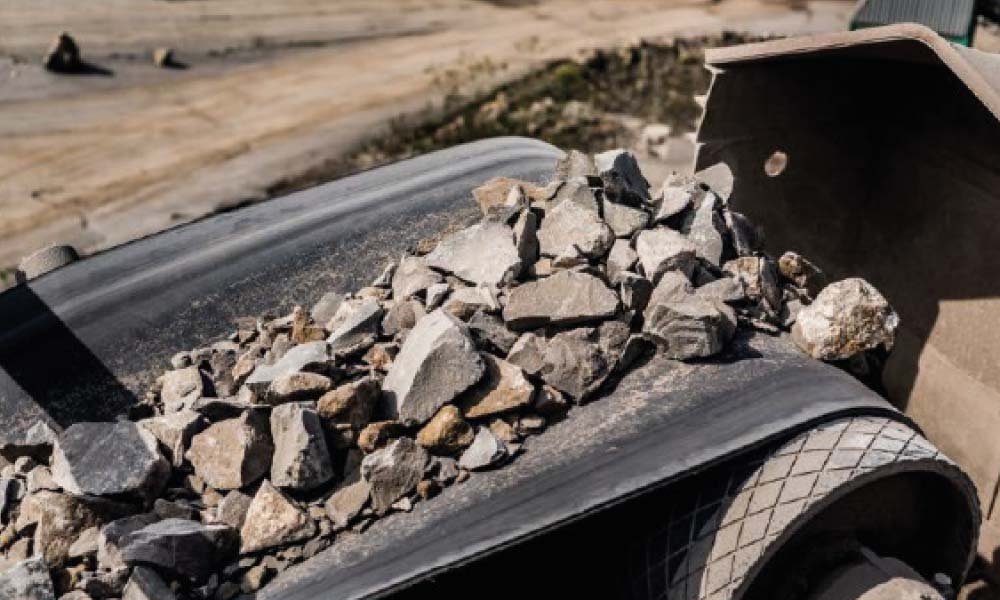The effects of exposure to ozone
Ozone occurs naturally in the upper atmosphere. At high altitude, it acts as a protective shield by absorbing harmful ultraviolet rays. However, at low altitude, the ozone itself becomes a pollutant. Exposure to ozone increases the acidity of carbon black surfaces and causes reactions to take place within the molecular structure of the rubber. This has several consequences such as a surface cracking and a decrease in the tensile strength of the rubber. The actual level of ozone concentrations at ground level, and therefore the level of
exposure, can differ greatly from one location to another depending on geographical and climatic conditions. The general concentration of ozone is from 0 to 6 parts per hundred million parts of air. Coastal areas have particularly high levels of ozone pollution. Ozone also occurs in cities and industrialised areas, when it is formed by the photolysis of nitrogen dioxide from automobile exhaust and industrial discharges, where ozone levels can range from 5 to 25 parts per hundred million parts of air.

Environmental and safety concerns
Belts that do not operate under shelter are especially prone to surface cracking, which can be extremely detrimental in terms of the performance of the belt and its working life.
Even more significant are the environmental and health and safety consequences of the damage caused by ozone exposure because dust particles from the materials being conveyed penetrate the surface cracks and are then discharged (shaken out) on the return (underside) run of the belt.
At first glance, fine cracks in the surface rubber may not seem to be a major problem but over a period the rubber becomes increasingly brittle. Transversal cracks deepen under the repeated stress of passing over the pulleys and drums and, if the conveyor has a relatively short transition distance, longitudinal cracks can also begin to appear.
Again, surface cracking may not initially seem to be a cause of concern but there are often hidden long-term effects.
One of those hidden effects is that moisture and other fluids seep into the cracks and penetrate through the belt covers
down to the carcass of the belt. If the belt is carrying product such as household waste, grain, wood/waste or biomass then the oils and resins that penetrate through to the carcass will cause the belt to swell and distort very badly.

The effects of ultra violet radiation
Ultraviolet radiation causes chemical reactions to take place within rubber and the rapid decline in the ozone layer in the upper atmosphere over the past several decades is allowing an increasing level of UV radiation to reach the earth’s surface. Ultraviolet light from sunlight and fluorescent lighting accelerates deterioration because it produces photochemical reactions that promote the oxidation of the surface of the rubber resulting in a loss in mechanical strength.
EN/ISO 1431 International standards
To scientifically measure resistance to ozone, samples are placed under tension (20% elongation) inside the ozone testing cabinet and exposed to highly concentrated levels of ozone for a period up to 96 hours. At Dunlop the pass criteria is that the rubber sample does not show any signs of cracking after 96 hours (@ 20°C, 50 pphm and 20% strain) inside the ozone cabinet. Every sample is closely examined for evidence of cracking at two-hourly intervals and the results carefully measured and recorded. As a general rule, based on experience, failure to exceed more than 8 hours under test without surface cracking will most certainly mean that the belt will start to deteriorate in less than 2 years. In many cases, particularly in coastal locations, deterioration will begin within a matter of months.
At Dunlop Conveyor Belting we were amongst the very first to introduce mandatory testing to EN/ISO 1431 international standards. As a direct result, special anti-oxidant additives that act as highly efficient anti-ozonants were introduced into all of our rubber compound recipes to provide protection against the damaging effects of ozone and ultra violet.
Always insist that your belt supplier provides written verification that their belts undergo stringent conditional
Seek advice
As often as not, the quality of a belt (including its ability to resist wear) is reflected in its price. It is always worth the effort to check the original manufacturers specifications very carefully and ask for documented evidence of tested performance compared to the relevant international standard before placing your order.











